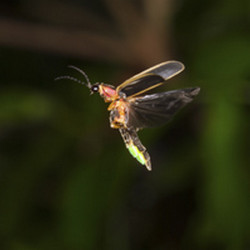Luminophores — synthetic mini-fireflies
Luminescence is widely exploited in bioimaging, optoelectronics and sensors. The field is highly competitive and continuously growing, requiring coordinated training to ensure that new and experienced researchers develop expertise regarding the latest developments. The FINELUMEN(opens in new window) project focused on the training of over 20 highly skilled young fellows in the fields of luminescence, carbon nanostructures and supramolecular chemistry. Combining these areas, scientists tackled the challenge of preparing and characterising special materials made of luminescent entities (luminophores) encapsulated within nano-containers to form supramolecular structures. Successful completion of the project extended the realm of research beyond the originally envisioned scope. Prolific results led to numerous papers in peer-reviewed scientific journals as well as two invention disclosures. Among the numerous accomplishments, novel organic and inorganic emitters developed by FINELUMEN investigators demonstrate very high luminescence. Made from materials in relative abundance, they are excellent candidates to replace costly and rare platinum metals. Researchers made numerous advances in the production and functionalisation of CNTs as well as their utility for encapsulating luminophores. A groundbreaking protocol to insert europium in the interior of CNTs may pave the way to a completely new type of organic/inorganic carbon-based luminophores. Scientists also developed protocols for low-temperature insertion using supercritical carbon dioxide and functionalisation of carbon nanostructures in the presence of light. The team tested complexes potentially suitable for use in photovoltaic devices and optoelectronics. FINELUMEN’s momentum propelled investigators beyond the scope of the original proposal into the realm of magnetically active guests. Scientists prepared CNTs with encapsulated iron-based complexes. When functionalised with antibodies, they facilitate separation of cancerous cells from healthy ones. Training through advanced research in chemistry, physics, biology and engineering will prepare young researchers for highly qualified jobs in academia and industry. Besides attracting students both from within the European Union and beyond its borders, project activities placed emphasis on promoting the scientific careers of women. Overall, FINELUMEN will have lasting impact on the future of EU research in the exciting area of supramolecular luminescence.







